- Clone
- 3F9 (See other available formats)
- Regulatory Status
- RUO
- Workshop
- VII 70502
- Other Names
- IL-10 Receptor, IL-10R
- Isotype
- Rat IgG2a, κ
- Ave. Rating
- Submit a Review
- Product Citations
- 8 publications
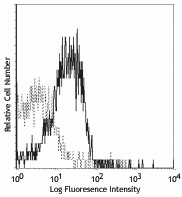
| Cat # | Size | Price | Quantity Check Availability | Save | ||
|---|---|---|---|---|---|---|
| 308802 | 100 µg | 92€ | ||||
CD210, also known as the IL-10 receptor, is a 90-110 kD protein expressed on T cells, B cells, NK cells, monocytes and macrophages. CD210 belongs to the class II cytokine receptor family which includes the IFN-γ receptor (CDw119), the IFN-α/β receptor (CD118) and tissue factor (CD142). The IL-10 receptor is involved in signal transduction by inducing phosphorylation of STAT1a and STAT3 and by inducing activation of Jak1 and Tyk.
Product DetailsProduct Details
- Verified Reactivity
- Human, Cynomolgus, Rhesus
- Reported Reactivity
- African Green, Baboon
- Antibody Type
- Monoclonal
- Host Species
- Rat
- Immunogen
- shIL-10R
- Formulation
- Phosphate-buffered solution, pH 7.2, containing 0.09% sodium azide.
- Preparation
- The antibody was purified by affinity chromatography.
- Concentration
- 0.5 mg/ml
- Storage & Handling
- The antibody solution should be stored undiluted between 2°C and 8°C.
- Application
-
FC - Quality tested
IP, Block - Reported in the literature, not verified in house - Recommended Usage
-
Each lot of this antibody is quality control tested by immunofluorescent staining with flow cytometric analysis. For flow cytometric staining, the suggested use of this reagent is ≤ 2.0 µg per million cells in 100 µl volume. It is recommended that the reagent be titrated for optimal performance for each application.
- Application Notes
-
Clone 3F9 recognizes the IL-10-binding epitope of IL-10R1.8 Additional reported applications (for the relevant formats) include: immunoprecipitation1, in vitro blocking1-3 of human IL-10 binding to IL-10R. For most successful immunofluorescent staining results, it may be important to maximize signal over background by using a relatively bright fluorochrome-antibody conjugate (Cat. No. 308804) or by using a high sensitivity, three-layer staining technique (e.g., including a biotinylated anti-rat IgG second step), followed by SAv-PE (Cat. No. 405204). The Ultra-LEAF™ purified antibody (Endotoxin < 0.01 EU/µg, Azide-Free, 0.2 µm filtered) is recommended for highly sensitive assays (Cat. No. 308817 and 308818).
- Application References
-
- Liu Y, et al. 1997. J. Immunol. 158:604. (Immunogen, IP, Block)
- Levings MK, et al. 2005. Blood 105:1162. (Block)
- Goodier MR, et al. 2000. J. Immunol. 165:139. (Block)
- Huang YH, et al. 2009. J. Leukoc. Biol. 86:273. PubMed
- Yoshino N, et al. 2000. Exp. Anim. (Tokyo) 49:97. (FC)
- Liu BS,et al. 2011. J Leukoc Biol. 89:981. PubMed
- Joffe M, et al. 2012. Int Immunol. 24:447. PubMed
- MacDonald KP, et al. 1999. J. Immunol. 163:5599. (epitope)
- Product Citations
-
- RRID
-
AB_314734 (BioLegend Cat. No. 308802)
Antigen Details
- Structure
- Ig superfamily, class II cytokine receptor family, transmembrane glycoprotein, 90-110 kD
- Distribution
-
T cells and B cells, NK cells, monocytes, macrophages
- Function
- Activates STAT1, STAT3, Jak1, Tyk
- Ligand/Receptor
- IL-10
- Cell Type
- B cells, Macrophages, Monocytes, NK cells, T cells
- Biology Area
- Immunology
- Molecular Family
- CD Molecules, Cytokine/Chemokine Receptors
- Antigen References
-
1. Kotenko S. 2002. Cytokine Growth Factor Rev. 13:223.
2. Trinchieri G. 2003. Nat. Rev. Immunol. 3:133. - Gene ID
- 3587 View all products for this Gene ID
- UniProt
- View information about CD210 on UniProt.org
Related Pages & Pathways
Pages
Related FAQs
Other Formats
View All CD210 Reagents Request Custom Conjugation| Description | Clone | Applications |
|---|---|---|
| PE anti-human CD210 (IL-10 R) | 3F9 | FC |
| Purified anti-human CD210 (IL-10 R) | 3F9 | FC,IP,Block |
| APC anti-human CD210 (IL-10 R) | 3F9 | FC |
| PE/Cyanine7 anti-human CD210 (IL-10 R) | 3F9 | FC |
| Brilliant Violet 421™ anti-human CD210 (IL-10 R) | 3F9 | FC |
| Ultra-LEAF™ Purified anti-human CD210 (IL-10 R) | 3F9 | FC,IP,Block |
| TotalSeq™-D1170 anti-human CD210 (IL-10 R) | 3F9 | PG |
| TotalSeq™-A1170 anti-human CD210 (IL-10 R) | 3F9 | PG |
| TotalSeq™-B1170 anti-human CD210 (IL-10 R) | 3F9 | PG |
Customers Also Purchased
Compare Data Across All Formats
This data display is provided for general comparisons between formats.
Your actual data may vary due to variations in samples, target cells, instruments and their settings, staining conditions, and other factors.
If you need assistance with selecting the best format contact our expert technical support team.
-
PE anti-human CD210 (IL-10 R)
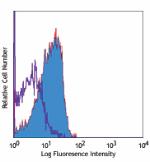
Human peripheral blood lymphocytes stained with 3F9 PE -
Purified anti-human CD210 (IL-10 R)
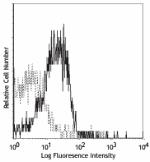
Whole blood lymphocytes stained with purified 3F9, then dete... -
APC anti-human CD210 (IL-10 R)

Human peripheral blood lymphocytes were stained with CD210 (... -
PE/Cyanine7 anti-human CD210 (IL-10 R)
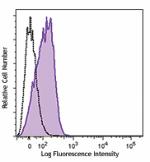
Human peripheral blood lymphocytes were stained with CD210 (... -
Brilliant Violet 421™ anti-human CD210 (IL-10 R)
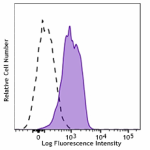
Human peripheral blood lymphocytes were stained with CD210 (... -
Ultra-LEAF™ Purified anti-human CD210 (IL-10 R)
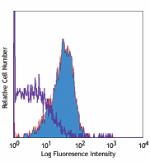
Human peripheral blood lymphocytes stained with LEAF™ purifi... -
TotalSeq™-D1170 anti-human CD210 (IL-10 R)
-
TotalSeq™-A1170 anti-human CD210 (IL-10 R)
-
TotalSeq™-B1170 anti-human CD210 (IL-10 R)

 Login / Register
Login / Register 






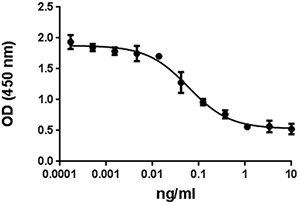

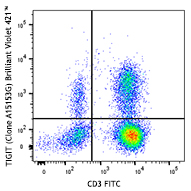
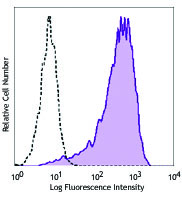







Follow Us